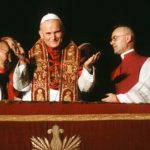“You once said to me that I would always be isolated,” wrote Vincent van Gogh to his brother Theo in 1884. It was the second time that year that he returned to this assessment by the person who knew him best. Vincent argued that Theo was wrong: “you’ve decidedly mistaken my character.” But a new book by Miles J. Unger shows us how Van Gogh, even when he went to live with Theo in crowded Paris and spent his days with fellow artists, was always alone.
For those who know Van Gogh’s life mostly through his letters, Unger has done a service by focusing on the formative period when his normally copious correspondence dwindled because he was living with his brother. The time in Paris—from March 1886 to February 1888—represented a quantum leap in Van Gogh’s art: anyone who compares The Potato Eaters (1885) to, say, Père Tanguy (1887) can see how a mere two years transformed Van Gogh’s style. The color palette is far brighter, and the brushstrokes quickly begin to show the influence of the neo-Impressionist painters that Van Gogh sought out in the cafés and studios of Montmartre. In Unger’s words, Van Gogh “got a crash course in modernism that for others took a lifetime.”
As Unger zeroes in on these months, tension builds between Van Gogh’s desperate longing for kindred spirits—“that sense of collegiality he craved”—and his inability to sustain normal human connections.
Vincent himself knew he needed both stylistic evolution and kinship, and he saw the two as linked. Shortly before he arrived (unexpectedly) in Paris, he wrote to Theo: “there is something wooden about me, as if I had spent ten years in solitary.” Vincent attributes this to worry and “no friends,” but he feels that both the artistic stiffness and social isolation “will change.”
In art and life, Van Gogh “needed depth, something that spoke to his heart, that relieved his loneliness and reassured him he was still part of the human community,” says Unger. Misunderstood in places like Antwerp, Vincent came to believe that Paris would solve his artistic and social problems.
But the “dysfunctional dynamic” that plagued Van Gogh was not resolved, only delayed. Even among bohemians, Vincent was too eccentric, too off-putting. He made rapid progress in his art but not in establishing warm human relations. We read again and again how any projects he develops that involve others “come to nothing.” In the same way, his hopes for close friendships burned hot and then sputtered out.
Unger can be prone to overspeculation. We don’t know that “Theo’s heart sank” when he learned of his brother’s surprise arrival in Paris—though it’s a good guess. And sometimes slovenliness is just slovenliness, not a protest, as Unger asserts it is when describing the paint jars strewn about Theo’s rooms.
Other hypotheses are more plausible. We know that Van Gogh was forced to paint himself for lack of models: all the self-portraits in his museum in Amsterdam may not show us the faces he most wanted to paint. Unger speculates that Père Tanguy’s willingness to pose “spar[ed] Vincent the psychologically fraught task of plumbing once more the depths of his own afflicted soul.”
Unger’s work is thorough but not magisterial; readers might find more fire and soul in works by critics like Pascal Bonafoux. There are longueurs (and little Van Gogh) in the chapter that traces the history of the Académie Française. But for a book of over six hundred pages, A Fire in His Soul is readable and engaging.
The book makes a convincing case that the Paris period was the most social time in Van Gogh’s adult life: the time when he was most often in the company of people who could understand his work, at least to some extent. But even artists who came to appreciate Van Gogh’s talent did not necessarily want to spend time with him. Nor did Van Gogh find a soulmate in any of them. By late July 1887, he was writing, “I’m going to retreat to somewhere in the south so as not to see so many painters who repel me as men.” Early the next year, he moved to Arles—alone.
Although Unger does not take on the Arles episodes, we know what happened there. Van Gogh’s “yearning for a communion of souls was so intense, and so one-sided, that it inevitably pushed away the object of his affection”—most notably Paul Gauguin, who fled Arles after the ear-severing attempt at an artists’ commune. Close friendships aside, Van Gogh was rejected by neighbors; the residents of Arles signed a petition to get rid of him.
Artistically, Van Gogh got what he needed from the two years in Paris. Socially, he was as isolated as ever. Unger’s title is taken from a letter in which Vincent describes the fire in his soul: “nobody ever comes to warm themselves at it, and passers-by see nothing but a little smoke at the top of the chimney.”
Unger claims that Vincent’s remedy for feeling unseen was to make art that everyone could see. But people can look straight at a great work of art and see nothing. Just as his home country had wanted neither his art nor him, France, and even his avant-garde confrères, did not either.
Before the Paris years, Vincent wrote to Theo, “Isolation is wretched enough, and a sort of prison. It is, however, perhaps not yet possible to say for certain to what extent I’ll go further into it.” We know now that he went all the way.


















